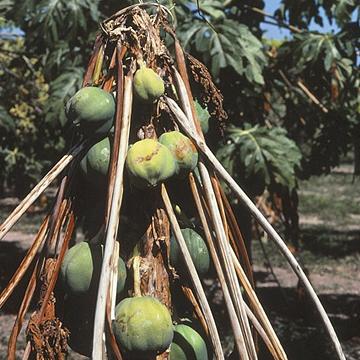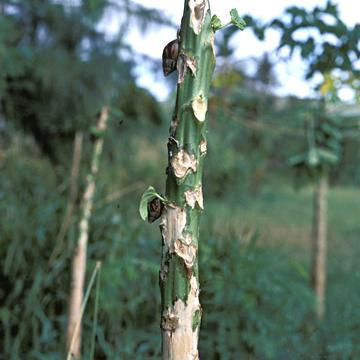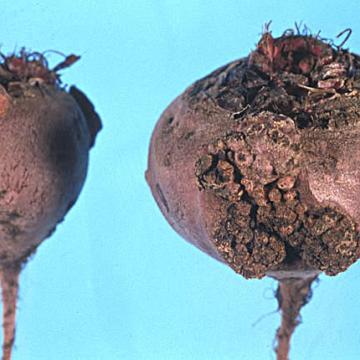DISEASE: Bacterial decline
HOST: Papaya
Bacterial decline of papaya, historically called St. Croix decline, was thought to be caused by a fungus. This picture shows a papaya with dead top and side branches, a severe stage of the disease.
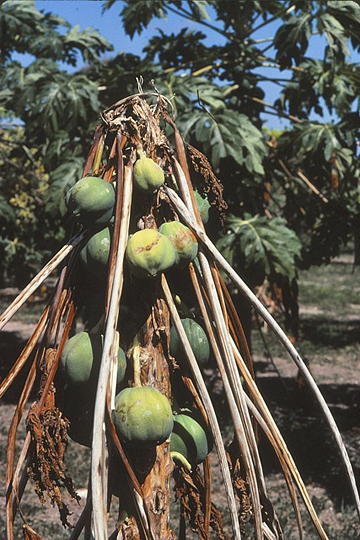
Bacterial decline | Papaya
DISEASE: Bacterial decline
HOST: Papaya (Carica papaya)
PATHOGEN: Erwinia papayae
SOURCE: M. Schroth
DISEASE: Bacterial decline
HOST: Papaya
Water-soaked papaya stem in St. Croix. Dark, water-soaked, greasy lesions occur on stems and leaves. The causal agent differs somewhat from descriptions of Erwinia papayae D strains in Micronesia.

Bacterial decline | Papaya
DISEASE: Bacterial decline
HOST: Papaya (Carica papaya)
PATHOGEN: Erwinia papayae
SOURCE: M. Schroth
DISEASE: Bacterial decline
HOST: Papaya
Bacterial invasion of leaf veins and adjacent tissues of papaya in Micronesia. This disease has also been called canker, dieback, and blight.

Bacterial decline | Papaya
DISEASE: Bacterial decline
HOST: Papaya (Carica papaya)
PATHOGEN: Erwinia papayae
SOURCE: E. Trujillo
DISEASE: Bacterial decline
HOST: Papaya
Complete destruction of papaya plantation in Micronesia. Only a severely damaged trunk remains.
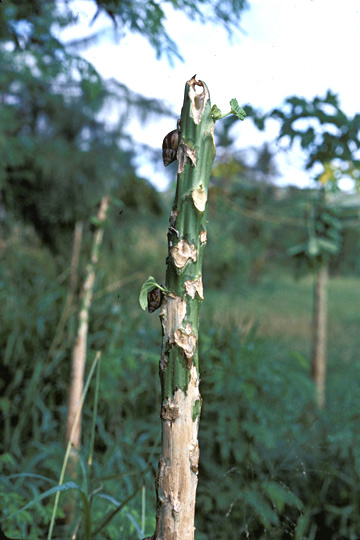
Bacterial decline | Papaya
DISEASE: Bacterial decline
HOST: Papaya (Carica papaya)
PATHOGEN: Erwinia papayae
SOURCE: E. Trujillo
DISEASE: Bacterial leaf and stem necrosis
HOST: Watermelon
Seedlings with necrotic leaves and water-soaked stems.

Bacterial leaf and stem necrosis | Watermelon
DISEASE: Bacterial leaf and stem necrosis
HOST: Watermelon (Citrullus lanatus)
PATHOGEN: Pseudomonas viridiflava
SOURCE: Y. Aysan
DISEASE: Bacterial scab
HOST: Beet
Bacterial scab of table beet.
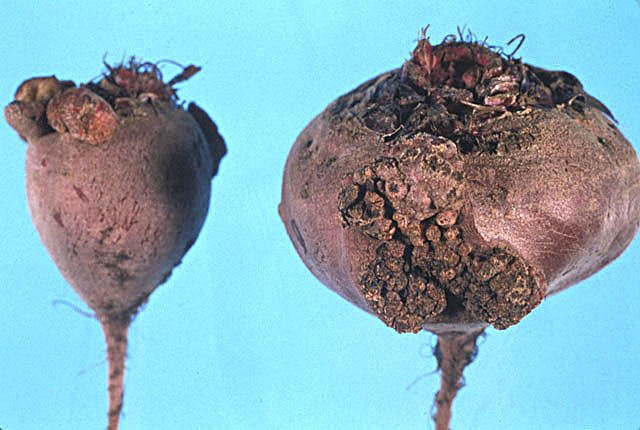
Bacterial scab | Beet
DISEASE: Bacterial scab
HOST: Beet (Beta vulgaris var. conditiva)
PATHOGEN: Pantoea agglomerans pv. betae
SOURCE: T. Burr
DISEASE: Bacterial scab
HOST: Gladiolus
Gladiolus bulb with brownish to dark brown, sunken scabs.

Bacterial scab | Gladiolus
DISEASE: Bacterial scab
HOST: Gladiolus (Gladiolus sp.)
PATHOGEN: Burkholderia gladioli pv. gladioli
PATHOGEN SYNONYM: Pseudomonas gladioli pv. gladioli
SOURCE: Plant Protection Service of the Netherlands


